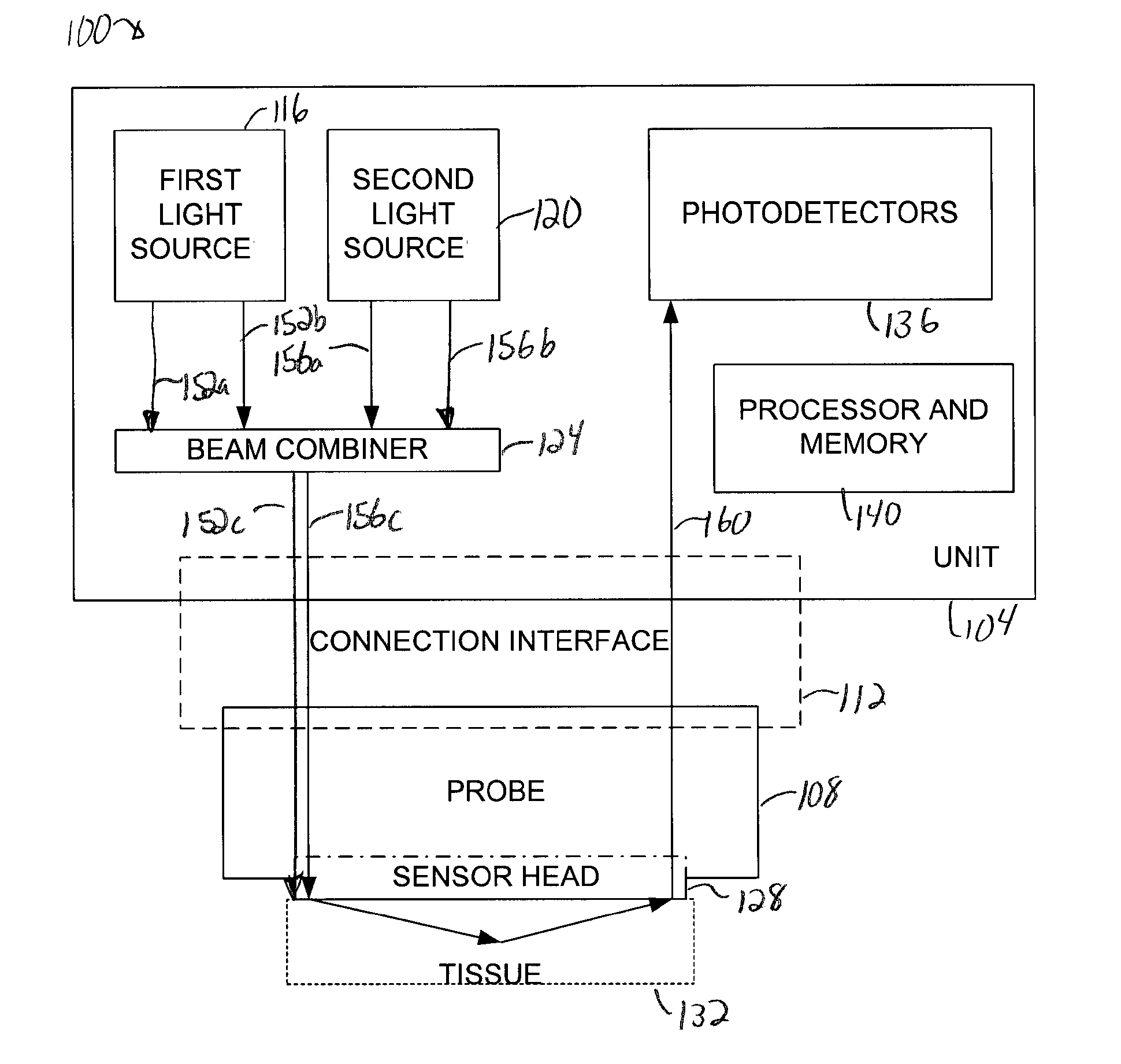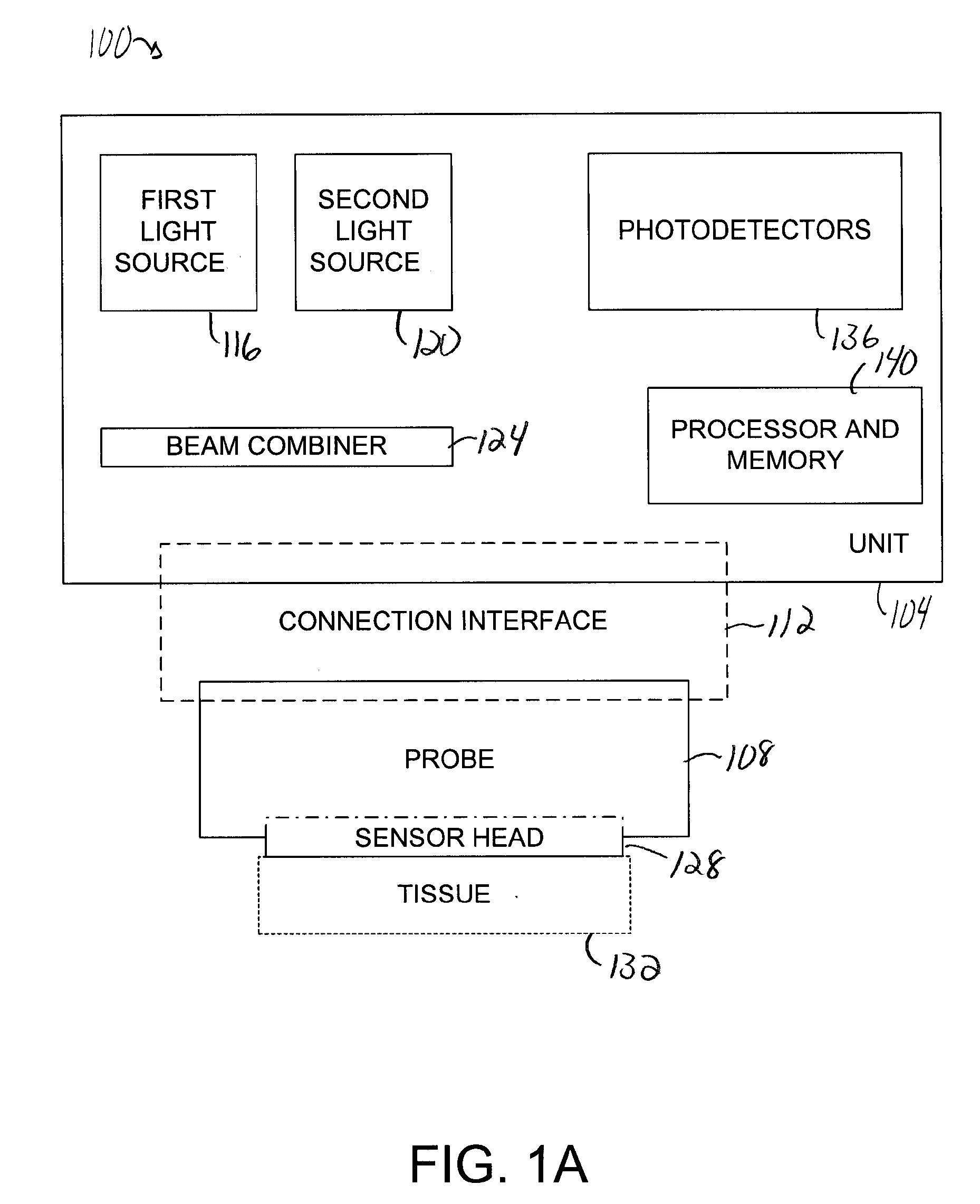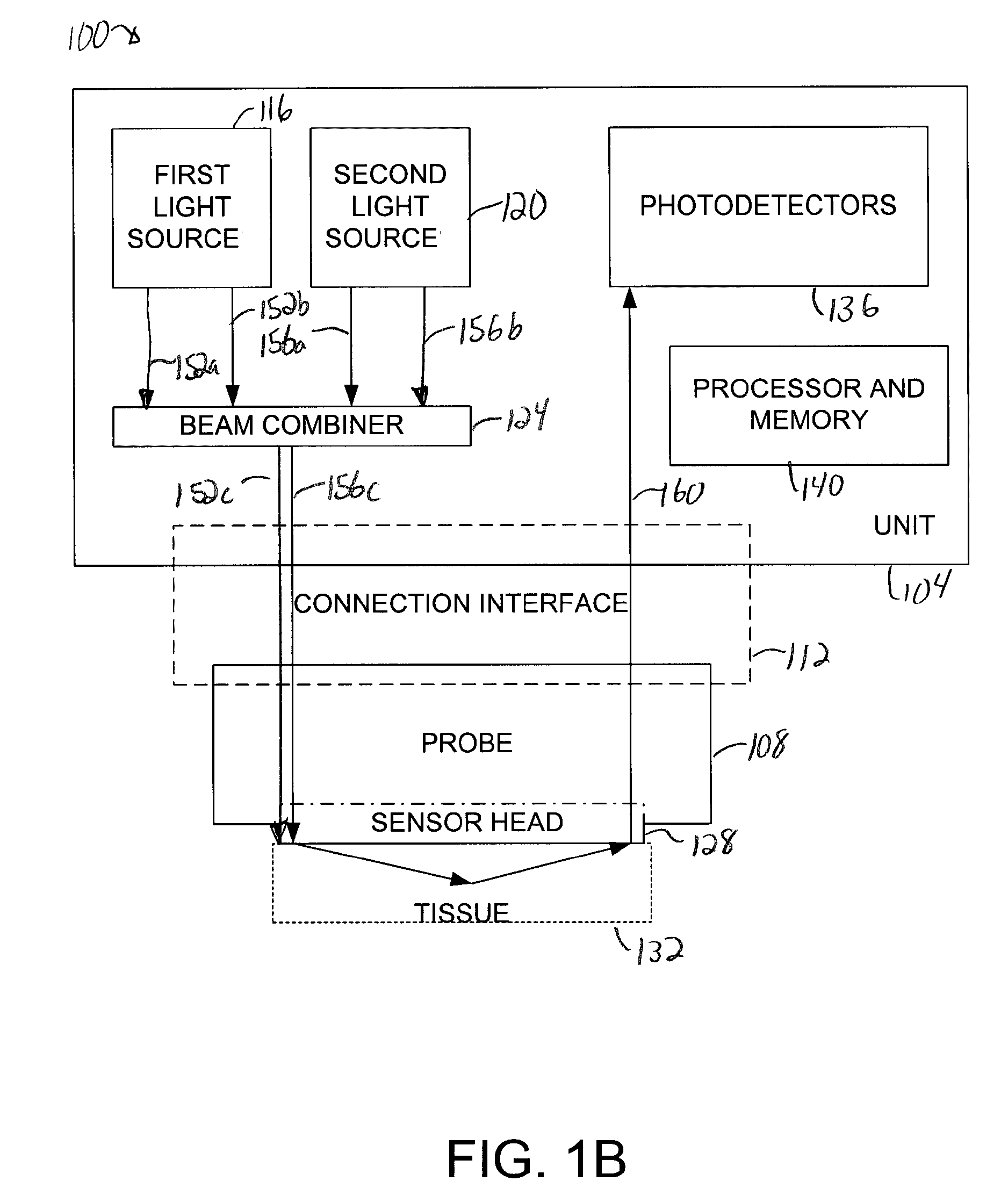Method for monitoring viability of tissue flaps
a tissue flap and viability technology, applied in the field of optical imaging systems, can solve the problems of transplanted flaps to die, transplanted flaps may sometimes die, transplanted tissue may die, etc., and achieve the effect of preserving the viability of the remainder of the flap
- Summary
- Abstract
- Description
- Claims
- Application Information
AI Technical Summary
Benefits of technology
Problems solved by technology
Method used
Image
Examples
Embodiment Construction
[0029] Assessing the blood supply associated with a flap is crucial to ensure that the flap is viable. By monitoring the oxygen saturation level of an area on flap tissue, the blood flow to at least that area may be determined. Monitoring an oxygen saturation level is generally a non-invasive, non-subject process. Near-infrared spectroscopy has been used for non-invasive measurement of various physiological properties in animal and human subjects. The basic principle underlying the near-infrared spectroscopy is that physiological tissues include various highly-scattering chromophores to the near-infrared waves with relatively low absorption. Many substances in a medium may interact or interfere with the near-infrared light waves propagating therethrough. Human tissues, for example, include numerous chromophores such as oxygenated hemoglobin, deoxygenated hemoglobin, water, lipid, and cytochrome, where the hemoglobins are the dominant chromophores in the spectrum range of approximate...
PUM
 Login to View More
Login to View More Abstract
Description
Claims
Application Information
 Login to View More
Login to View More - R&D
- Intellectual Property
- Life Sciences
- Materials
- Tech Scout
- Unparalleled Data Quality
- Higher Quality Content
- 60% Fewer Hallucinations
Browse by: Latest US Patents, China's latest patents, Technical Efficacy Thesaurus, Application Domain, Technology Topic, Popular Technical Reports.
© 2025 PatSnap. All rights reserved.Legal|Privacy policy|Modern Slavery Act Transparency Statement|Sitemap|About US| Contact US: help@patsnap.com



